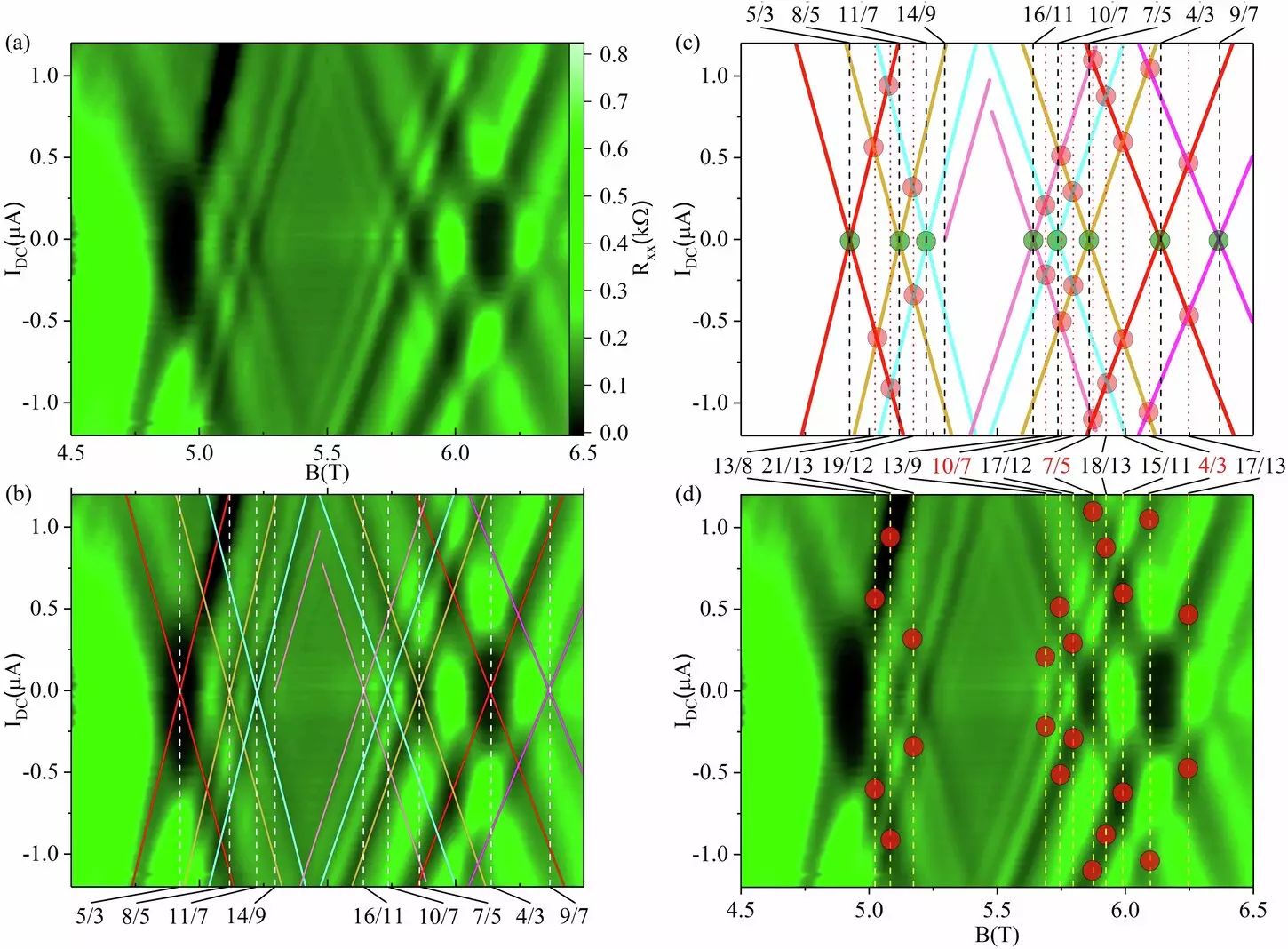The world of physics is a vast and complex one, filled with mysteries waiting to be unraveled. Imagine a two-dimensional flatland, where the rules of physics are unconventional, and particles like electrons behave in ways that defy our expectations. A team of researchers, led by Georgia State University Professor of Physics Ramesh G. Mani and recent Ph.D. graduate U. Kushan Wijewardena, has embarked on a journey to study this peculiar world in Georgia State’s laboratories. Their groundbreaking studies have recently been published in the journal Communications Physics, shedding light on the enigmatic realm of fractional quantum Hall effects (FQHE).
The quantum Hall effect has been a pivotal area in condensed matter physics since the groundbreaking discovery by Klaus von Klitzing in 1980. This discovery revolutionized our understanding of fundamental constants that govern the behavior of the universe, earning von Klitzing a Nobel Prize in 1985. Subsequent discoveries, including the fractional quantum Hall effect and the exploration of graphene, have led to further advancements in the field, culminating in Nobel Prizes in 1998 and 2010, respectively. These discoveries have paved the way for the development of modern electronics, such as cellphones, computers, and GPS devices, shaping the technological landscape of the 21st century.
In a series of groundbreaking experiments conducted in extreme cold conditions, Professor Mani, Wijewardena, and their colleagues delved deep into the world of flatland science. By applying a supplementary current to high-mobility semiconductor devices made from gallium arsenide and aluminum gallium arsenide materials, the team observed unexpected phenomena, uncovering new non-equilibrium states of these quantum systems. The study highlighted the importance of high-quality crystals in the success of their research, emphasizing the collaborative efforts of researchers at institutions such as the Swiss Federal Institute of Technology Zurich.
The team’s research not only challenges existing theories but also suggests a hybrid origin for the observed non-equilibrium excited-state FQHEs. By pushing the boundaries of conventional research in condensed matter physics, the team has opened up new avenues for exploration and technological advancements. The implications of their findings extend beyond the confines of the laboratory, offering potential insights for quantum computing and materials science. Through their innovative approach and unexpected results, the team is paving the way for future discoveries in this dynamic field.
As Mani, Wijewardena, and their team continue to push the boundaries of flatland science, they are laying the groundwork for future technologies that could revolutionize data processing, energy efficiency, and more. By training new generations of students and fostering a spirit of curiosity and exploration, these researchers are shaping the future of condensed matter physics. With each experiment, the team moves closer to unraveling the complex behaviors at play in flatland systems, remaining open to the possibility of new discoveries that could reshape our understanding of the universe.


Leave a Reply
You must be logged in to post a comment.